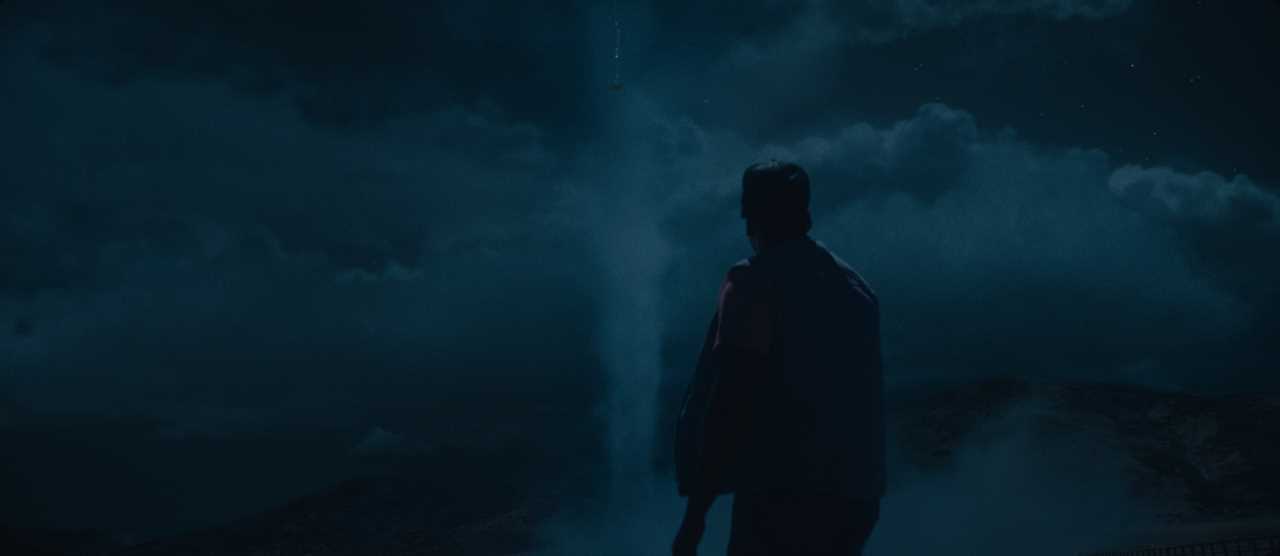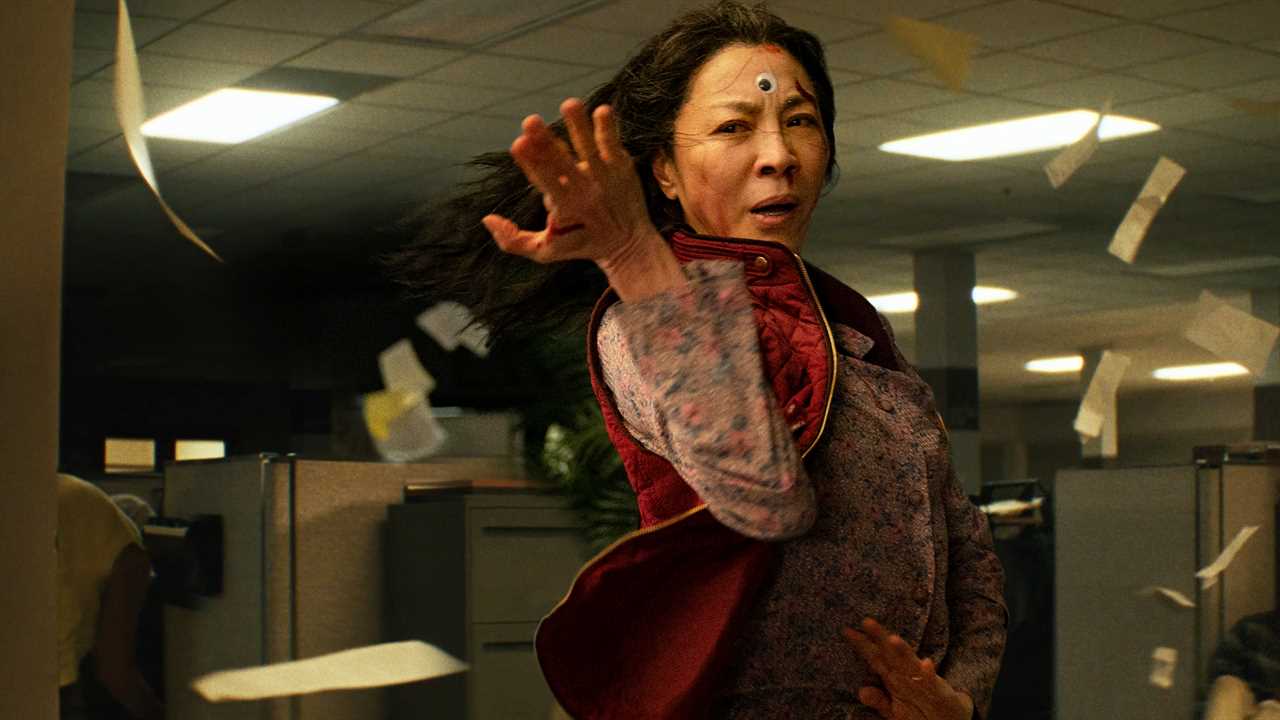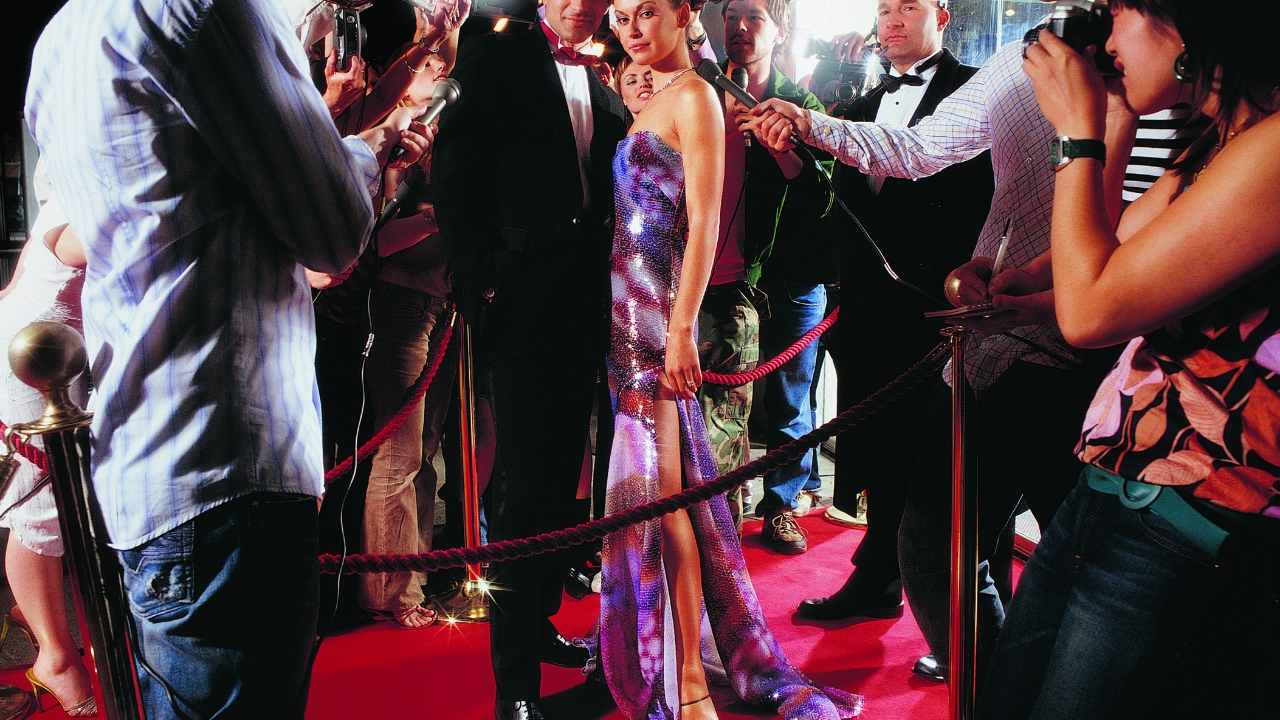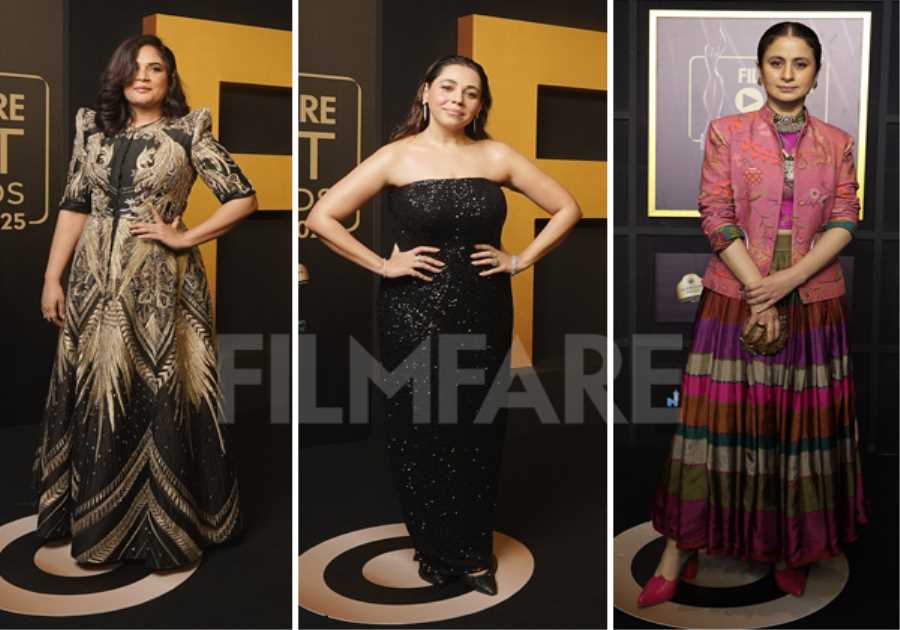With summer hits “Top Gun: Maverick” (Paramount), “Nope” (Universal), and “Everything Everywhere All at Once” (A24) being given Oscar pushes for Best Picture, it will definitely impact the craft races as well. So while we await the coming of the two fall behemoths — “Black Panther: Wakanda Forever” (Marvel/Disney) and “Avatar: The Way of Water” (2oth Century/Disney) — let’s assess where the summer trio of blockbusters have the best craft opportunities.
Joseph Kosinski’s high-octane “Top Gun: Maverick” became a global phenomenon, riding a wave of nostalgia to a $1.4 billion box office take and becoming the first must-see theatrical event since the start of the COVID-18 pandemic, thanks to the filmmakers putting us thrillingly inside the cockpits of the fighter jets with Tom Cruise’s Maverick. As a result of this amazing practical aerial work, the movie became an early frontrunner in cinematography, editing, and sound, and also has a shot at landing on the VFX shortlist.
Jordan Peele made the first horror film in IMAX with his subversive UFO movie, “Nope,” which might also be Hollywood’s first anti-spectacle spectacle. It has a chance to score nominations in cinematography, editing, sound, production design, VFX, and score.
With “Everything Everywhere All at Once,” the directing duo of the Daniels (Dan Kwan and Daniel Scheinert) created a maximalist kung-fu epic and multi-generational family saga starring a badass Michelle Yeoh. A24’s biggest hit to date (cracking $100.7 million) has an opportunity to compete in cinematography, production design, costume design, editing, sound, score, and VFX.

Tom Cruise in “Top Gun: Maverick”
Paramount
Flying High with “Top Gun: Maverick”
Cruise’s daredevil reputation reached its greatest heights (so far) in “Maverick” with his insistence on shooting as much in-camera flying scenes as possible. To achieve this, the filmmakers made use of the innovative Sony Rialto Camera Extension System, which fit six 6k Venice cameras inside the cockpits of the film’s jets. With the cameras separated from their sensor blocks, the camera crew achieved a new level of photographic realism and IMAX-level flash in their bomber mission movie. That puts Oscar-winning cinematographer Claudio Miranda (“Life of Pi”) in the driver seat this season, for overseeing the aerial work and naturalistic lighting both inside and outside the planes.
While the practical, in-camera flying scenes have been rightly touted, the supporting VFX (done principally by Method — now part of Framestore — and production supervised by Ryan Tudhope) have so far gone unnoticed because of a stealth campaign. This is highly unusual for a summer blockbuster, but that will change during awards season when “Maverick” is submitted for the VFX shortlist. According to a few of the film’s VFX artists on Reddit, the work entailed more than 1,200 shots, with lots of comps (including inside the cockpits), matte paintings, environment and sky replacement, plate augmentation and cleanup, and full CG jets after takeoff and during dogfights — especially those involving gunfire and explosions.
Having to assemble and cut more than 813 hours of aerial footage for the 130-minute movie became a complex puzzle for editor Eddie Hamilton. Initially, he cut only interior shots of the pilots, using model F-18s on wooden sticks recorded on iPhones to give an idea of exterior jet shots. Months later, the exterior shots were combined to make the action play effortlessly, kinetically, and emotionally. But it was important to win over the viewers within the first two minutes, which meant the opening carrier deck montage was critically important to set the stage for the return of Cruise’s Maverick.
The aerial scenes with Maverick in the cockpits were then constructed into a hyper-real soundscape by the sound team of James Mather (sound designer/supervising sound editor), Al Nelson (sound designer/supervising sound editor), Gary Summers (re-recording mixer), and Mark Taylor (re-recording mixer). They termed their work “synaptic,” emphasizing breathing and the manipulation of the control stick, and favoring dynamics over the more conventional “wall of sound” approach. That’s why there’s almost no jet noise during one of the first flight training scenes until Maverick shoots through. That’s when you get the jet noises, the sound of air whooshing over the wings, and the sonic reflection of the aerobatics. The sound team worked closely with the muscularity of Hamilton’s cutting to smash against the sonic booms, powering into the next shot.

“Nope”
Universal Pictures
The Method Behind the Subversive Spectacle of “Nope”
Peele explores the dangerously addictive nature of the thrill-seeking gaze in “Nope,” filtering it through the Black experience as great cinematic spectacle. This became a must-see IMAX experience, thanks to the brilliant crafts teams. Cinematographer Hoyte van Hoytema, who’s on the cutting edge of large format with Christopher Nolan, used IMAX cameras for the alien attacks and the Gordy the chimp massacre, and Panavision System 65 cameras for the rest of the movie (with Kodak supplying 65mm film). However, van Hoytema’s greatest innovation was devising a technique for shooting large format day-for-night for more realistic nighttime vision. This consisted of shooting each sequence on an infrared digital 65mm camera synchronized with a Panavision System 65 camera. This was then blended seamlessly with footage captured through the traditional camera lens.
The challenge for go-to editor Nicholas Monsour was delivering the historic IMAX-sized spectacle of horror/sci-fi/Western but with humor yet subverting its big screen pleasures. There was a “Jaws”-like impulse in playing peek-a-boo with the alien hiding in the clouds, while the disturbing rampage by Gordy during a TV show taping was obliquely presented from the POV of child star Ricky “Jupe” Park (Jacob Kim) through a semi-transparent tablecloth.
Meanwhile, production designer Ruth De Jong created the kitschy Jupiter’s Claim set (which has already staked its claim as part of Universal Studios’ backlot tour) with a sense of wonder in Santa Clarita Valley. This becomes the site of the spectacular daytime alien attack, and is already primed with wild colors as “a Western town on acid.”
In keeping with the “Jaws”-like strategy, the soundscape, led by supervising sound editor and re-recording mixer Johnnie Burn (“Under the Skin”), focused on the mysterious, alien known as Jean Jacket hidden behind the clouds that subsequently unfolds into a unique wind creature. They resisted the urge to convey alien sounds early on, when it acts like a predator, but in the middle we start to subliminally hear the horrifying sounds of people and animals screaming, when in reality it’s just processed wind sounds. At the end, though, when the alien fully emerges, it screams to be looked at.
The VFX by MPC (led by production supervisor Guillaume Rocheron) was responsible for Jean Jacket (which unfolds into a unique wind creature), the modular CG cloudscapes, enhancement of van Hoytema’s large format day-for-night shoot, and the fully CG Gordy chimp (with Terry Notory of “Planet of the Apes” fame doing the mo-cap). In addition, MPC also handled the clothes, props, and blood to match precisely how they looked on the actor. The challenge was to render diffusely through layers of transparent fabric.
Fittingly, go-to composer Michael Abels created a sense of musical chaos with his experimental score using new tools and techniques to make us squirm before the rousing climax with lots of brass and bass. It all hinged on musically defining “a bad miracle” as the dichotomy between awe and dread, with motifs that embraced and subverted the horror genre, sometimes working with sound editor Burn to pit negative space against music with percussive tricks and wordless choir.

“Everything Everywhere All at Once”
Allyson Riggs/A24
Cracking the Multiverse of “Everything Everywhere All at Once”
The key for the crafts teams on “Everything Everywhere All at Once” was to strike a balance between the epic multiverse adventure and intimate family saga. For cinematographer Larkin Seiple (“Swiss Army Man”), that meant using light to convey the emotional core of a scene and making bold color choices to distinguish universes and predicaments. Shooting with the Arri Alexa Mini, Seiple used various lenses (Altas Orion, Scorpiolens, and Todd-AO anamorphic, Zeiss Master Primes) and custom lighting rigs to differentiate Evelyn’s (Yeoh) time-hopping exploits. They created their own cinematic language, riffing off of “Die Hard,” “In the Mood for Love,” “Magnolia,” “The Sound of Music,” and “2001: A Space Odyssey,” among others.
Editor Paul Rogers went about finding the emotional connection between stressed-out mother Evelyn and her joyless daughter, Joy (Stephanie Hsu), who become combatants. The editor and the Daniels carefully layered the bombastic editing choices onto Evelyn’s arc about finding love and happiness. The extended fights were distinguished by martial arts styles and rhythms (including lots of slapstick involving the bizarre hot dog fingers, the weird butt plug, and the hilarious “Raccoonouille” episode). Where the free form and experimentation came in was during the jumping between exotic and mundane universes.
Costume designer Shirley Kurata had quite an expansive opportunity with Evelyn and Joy (the latter of whom becomes the baddie Jobu). Since most of the characters frequently “‘verse jump,” the clothing they wear clues us in on their different iterations. In one sequence alone, Evelyn dons an opulent robe as a famous Chinese opera singer and then a chic long gown as a contemporary movie star attending a film premiere. For Jobu’s Elvis costume, Kurata happened upon a large jumpsuit that she shrunk down to fit the actress.
Production designer Jason Kisvarday was tasked with visually constructing the complex world building, from the magnificently cluttered office of Evelyn’s dreary laundromat to the oppressive IRS office/martial arts battleground, and the 50 multiverse set pieces along the way. Fortunately, Kisvarday discovered a warehouse in Simi Valley that served most of the sets revolving around the IRS office, while an L.A. studio was transformed into various multiverse sets, culminating with the surreal, white, palatial setting for the Everything Bagel sequence.
The sound team of Brent Kiser (supervising sound editor/re-recording mixer), Andrew Twite (sound designer), and Alexandra Fehrman (re-recording mixer) constructed several hundred unique sound effects tracks for each universe, which allowed a multitude of distinct ambient noises that could be split apart into a series of subsets that transition into subsequent scenes. Thematically, however, the sound of broken glass symbolized the leakage of Evelyn’s mind between universes or Joy’s talent for tuning in universes through the sounds of the radio. That’s where Atmos especially came in handy along with a ripple effect like the lighting during fights.
The Daniels tapped minimalist L.A. post-rock band Son Lux (keyboardist and vocalist Ryan Lott, guitarist Rafiq Bhatia, and drummer Ian Chang) to capture the maximalist quality of the movie, based on the group’s effortless ability to navigate disparate musical elements. They created 1 hour and 50 minutes of music that ranged from synthetic beats to Chinese opera. Son Lux employed certain melodies for specific relationships, creating the effect of flipping between TV channels — but the key was connecting the intimate moments to everything else, while making the lengthy fight sequences sound distinctive, including experimenting with Chinese drums and tuned gongs.
Finally, the supporting VFX by a small team of artists with vast filmmaking expertise (under the production supervision of Zak Stoltz) went for an ’80s handmade vibe (think “Ghostbusters”) combined with cutting edge motion graphics in After Effects because of its flexibility. Thus, CG was used sparingly during the wide-ranging martial arts fight scenes in the IRS office or the Benihana-style steakhouse.
-----------------------
By: Bill Desowitz
Title: Summer Blockbusters Are Making Plays for Best Picture. How Will It Impact the Craft Oscars?
Sourced From: www.indiewire.com/2022/10/2023-oscars-top-gun-maverick-nope-everything-everywhere-1234773500/
Published Date: Wed, 19 Oct 2022 19:00:34 +0000







